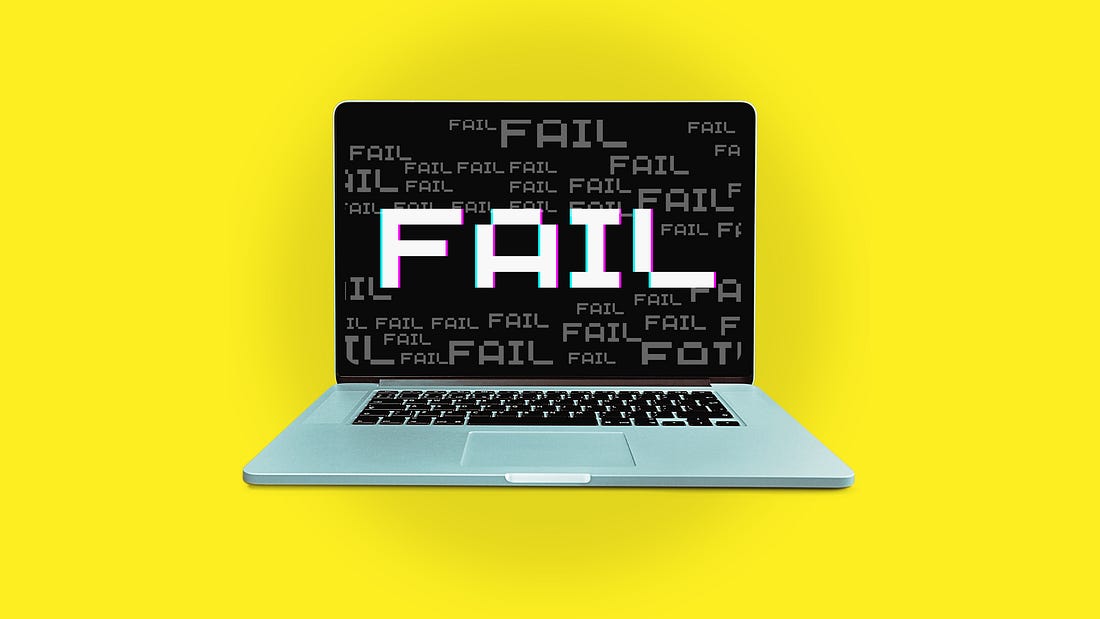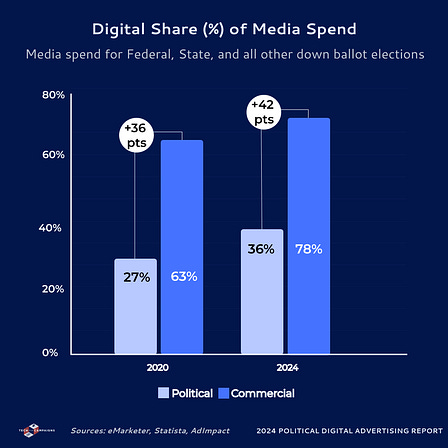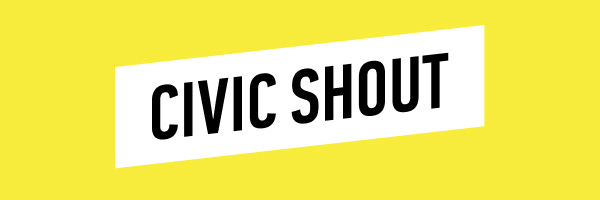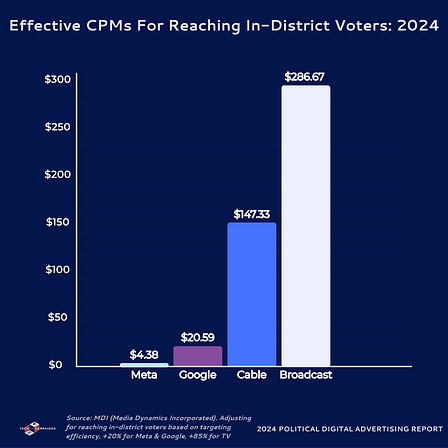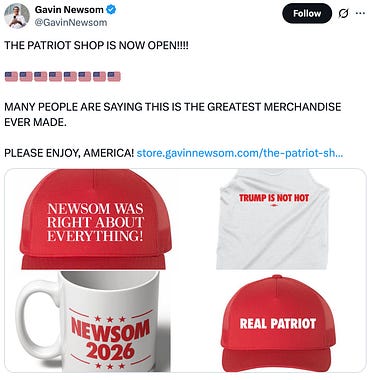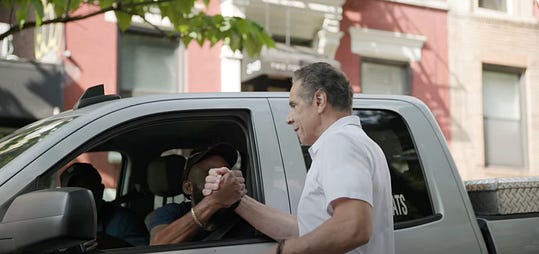Fail to WinWhy experimenting and calculated risk-taking online is the real path to success for progressivesThis newsletter is sponsored by the donor acquisition approach that helps you turn $1 into $2. Hi there — I’m Garima Verma, a long-time FWIW reader, and strategist for mission-driven leaders and organizations. I’m excited to be your guest author today! I started in entertainment, building strategies for shows like black-ish and Speechless and films like Mission: Impossible Fallout and Sonic the Hedgehog. I then took my passion for impact and storytelling to the Biden-Harris campaign, former FLOTUS Dr. Jill Biden’s office, and Stacey Abrams’ digital operation. And now I work as a strategic advisor and facilitator. For today’s FWIW, I wanted to talk about what’s preventing us from taking the necessary risks to win in today’s environment and what we, as digital practitioners, can do about it. More on that below, but first… What we knowReaching, engaging and mobilizing people in 2025 is really hard and really complicated. Voters are self-selecting information from different places, rejecting what doesn't align with their beliefs, and are overwhelmed by the world’s instability and amount of content they’re exposed to. And for the first time, more Americans are getting their news from social media than traditional media. And it’s not just in news and politics dealing with audiences curating their own individual digital spaces – even the almighty Netflix is overhauling its interface for the first time in 10+ years in an attempt to keep people on its platform, and more specifically curate their experience. As progressives, we are competing for voters’ attention against the commercial space (and literally everything else on the internet), but our digital ad spend and marketing innovation continue to fall further and further behind. What the Right got rightWe’ve watched the Right strategize, experiment and iterate over many years. They took from the commercial space and doubled down on the theory that brand equity principles apply to politics — persuasion is about shaping long-term beliefs, not just capturing short term attention. They identified, anticipated and invested in the exponentially increasing influence of digital platforms and messengers – from organic social and paid ads to creators and podcasts. And their theories were on the nose. A recent study showed that 1 in 5 Americans regularly get news from influencers on social media and 1 in 3 reported changing their opinion after hearing a podcast discussion. They now dominate the share of voice online pretty much across the board, making it even harder than it already was for us to persuade and mobilize voters. Despite how it might feel when we get those many, many fundraising texts and emails, a recent Tech for Campaigns report showed that the amount of money wasn’t the problem. It was how the money was allocated, distributed and spent. In fact, in the last presidential cycle, the Trump campaign spent nearly 3x less than the Harris campaign on Meta, Google, and connected TV (CTV) combined. The Right didn’t always do things perfectly, but they made targeted, tailored, strategic decisions that matched people + platform + behavior with specific and timely campaign goals. And when they failed, they learned from their mistakes and adjusted accordingly, rather than abandoning the effort entirely. They saw digital as a high-risk, high-reward playing field and it paid off big time. Tired of burning money with Care2 or Meta ads?
Where Democrats Fall ShortWhile Democrats have progressed significantly in our approach, we’re still far behind. Instead of adapting to the current landscape, we often hold onto previously held beliefs and are averse to taking the necessary risks to succeed. Many Democrats are still using an old, one-size-fits-all digital playbook that no longer works in the modern day. It's not just about taking risks, but taking the right risks online. A few examples:
We also aren’t making our money go as far as it could. In downballot races where resources are more limited, candidates are still spending significant amounts on traditional media where 70-80% of their investments aren’t reaching voters in their district, despite digital being 14-65x more cost effective and efficient. Now what?We start by acknowledging that, yes, the internet can be a scary place. You never know exactly what will happen or how things will be received. We can control fewer factors than ever before and it feels like we’re constantly sailing into uncharted waters. But we can’t continue to allow this discomfort to stop us from continuing to try. Digital strategy in 2025 feels a lot like dating — you have to take some leaps of faith, engage in trial and error, learn from your mistakes and hope the stars align in your favor. You won’t find your audience — or your person — and mobilize them to action if you stay home or make too many wrong moves. The name of the game is taking strategic, calculated risks. It’s being proactive rather than just reactive. Invest in what you can control, experiment, iterate and let go of the rest. Instead of constantly playing whack-a-mole with the news cycle or changing climate, build plans ahead of time with distinct, tangible goals, clear direction and a roadmap to navigate the uncharted waters of digital and campaigning. Your strategy is your north star — it is your what and your why and gives you space to figure out the best how. Strategy gives you an informed and authentic foundation that makes it easier to react in rapid-response moments, shift when you get new information and gives you something to point to when people get scared by press headlines or Instagram comments. This is why what works for one candidate won’t necessarily work for another. Take Gavin Newsom’s recent quest to mimic and mock Donald Trump’s brand. People are loving it and surprisingly buying his merch in impressive numbers. But imagine this exact approach from Gretchen Whitmer or Tim Walz. It probably wouldn’t land in the same way. My favorite example of this is from the NYC Mayoral Primary. We all know about the unexpected success of Zohran Mamdani — how he went from being an extremely long-shot candidate polling at 1% to winning the Democratic primary by a significant margin. His entire campaign was about taking calculated risks informed by his unique voter base, the political and cultural landscape of New York and his relationship to the issues and the city at large. Meanwhile, after a devastating loss, Andrew Cuomo recognized that he needed to use his social media more, something that (clearly) doesn’t come as naturally to him as it does to Zohran. His independent launch video looks awfully similar to Zohran’s Manhattan walk and New Yorkers saw right through it because he isn’t Zohran and his relationship to the city and its people isn’t the same. In my own personal experience during the 2022 gubernatorial race in Georgia, we got polling late in the game showing Stacey Abrams significantly underperforming with Black men. Instead of just panicking and going through rounds of revisions to try and create the perfect content, we decided to learn quickly and test our theories. We put together a custom, digital-first ad shoot and paid plan that allowed us to center what we learned about this audience and actually meet them there, mixing and matching real people in the community with a variety of key messages in their own words.
These ads significantly outperformed all benchmarks and moved the needle when not much else had. Our approach wasn’t perfect and it clearly didn’t win us the election, but it worked when not much else did, and that is exactly the point of testing and adapting (and, sometimes, failing). Digital practitioners leading the chargeI completely understand that so many of us feel defeated. I often do too. Almost every person I talk to in the digital space is exhausted and frustrated because they feel like they can’t do their jobs effectively. Years and years of being shut out and shut down and being told “this isn’t what we need” has us exhausted and accepting crumbs. But with every year and every campaign, we have more openings to guide leadership toward more intentional approaches, create comfort with risk, and remind them of how digital works when we get pushback. While other people are catching up in their understanding, we have a chance to be catalysts for change.
If we don’t fight these battles now, our leaders won’t be able to effectively fight the battles that lie ahead. The bottom lineWhen 85% of Americans don’t think elected officials care what “people like them think,” we’re fighting an uphill battle. The simple answers and guarantees that people are looking for simply don’t exist — they can’t, given how complicated the world is now. The complexity of our approach must match the complexity of this moment. We have to get comfortable being uncomfortable ourselves, then create safety and understanding for those in charge. The odds are stacked against us, but this might just give us a fighting chance. At this point — what other choice do we have? Tired of burning money with Care2 or Meta ads?
That’s it for FWIW this week. This email was sent to 24,571 readers. If you enjoy reading this newsletter each week, would you mind sharing it on X/Twitter, Threads, or Bluesky? Have a tip, idea, or feedback? Reply directly to this email. |
